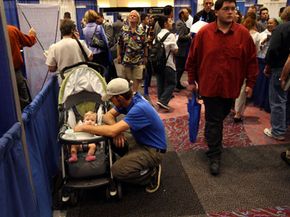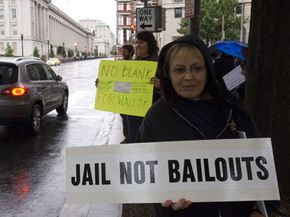In 2008, the United States teetered on the brink of financial disaster. Unemployment looked to reach its highest levels in two decades [source: Boston Globe]. Homeowners defaulted on their loans in record numbers. Enormous investment banks that had been in business for more than a century and had endured the Great Depression faced collapse. The economy, in other words, was circling the drain. And all of it, every last part of this looming economic disaster, was due to a unique financial instrument called the mortgage-backed security.
Mortgage-backed securities (MBSs) are simply shares of a home loan sold to investors. They work like this: A bank lends a borrower the money to buy a house and collects monthly payments on the loan. This loan and a number of others -- perhaps hundreds -- are sold to a larger bank that packages the loans together into a mortgage-backed security. The larger bank then issues shares of this security, called tranches (French for "slices"), to investors who buy them and ultimately collect the dividends in the form of the monthly mortgage payments. These tranches can be further repackaged and sold again as other securities, called collateralized debt obligations (CDOs). Home loans in 2008 were so divided and spread across the financial spectrum, it was entirely possible a given homeowner could unwittingly own shares in his or her own mortgage.
Advertisement
It sounds innocuous enough, and it is. It's also an excellent and safe way to make money when the housing market is booming. And in the early 21st century, the U.S. housing market was booming. A person who bought a new home in January 1996 for $155,000 could reasonably expect to make a profit of $100,000 when selling it in August 2006 [source: U.S. Census Bureau, CNN Money].
But 2008 wasn't 2006; the housing market in the United States was no longer booming. And it was the mortgage-backed security that killed it.
Advertisement



